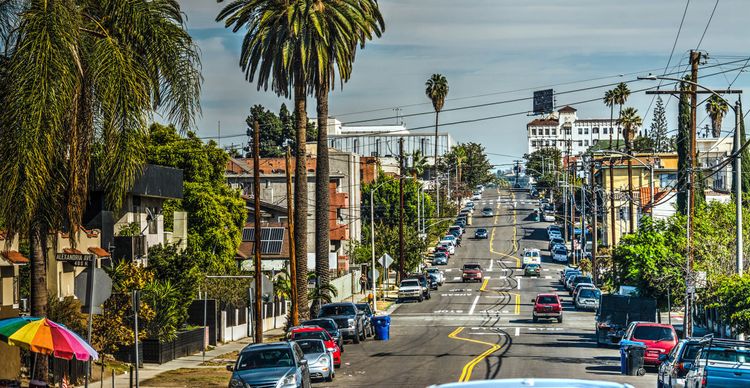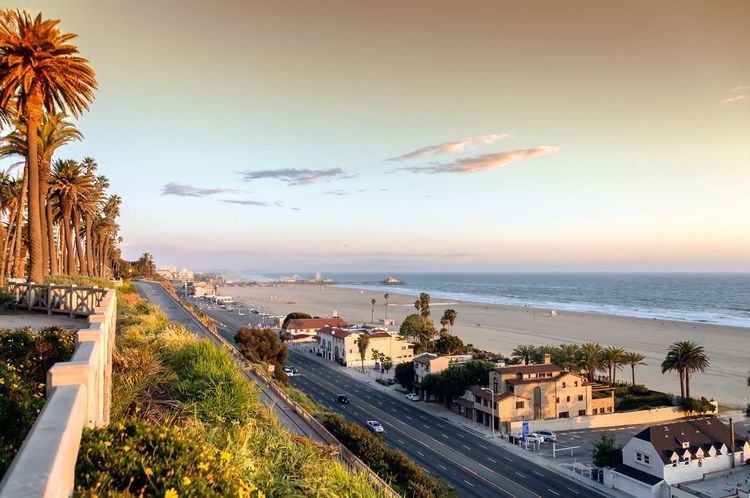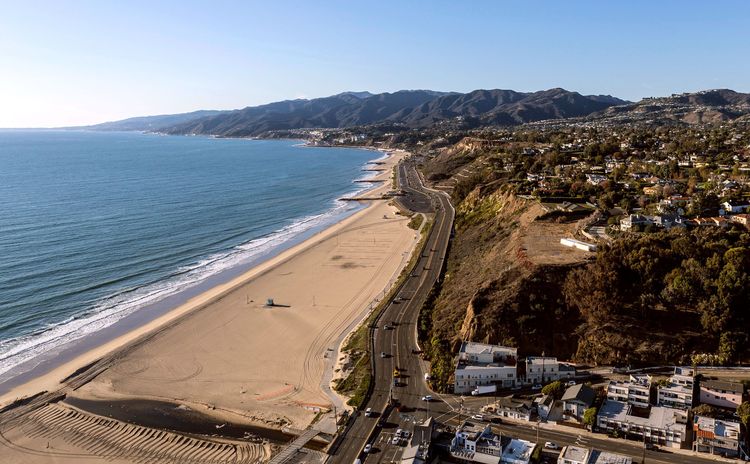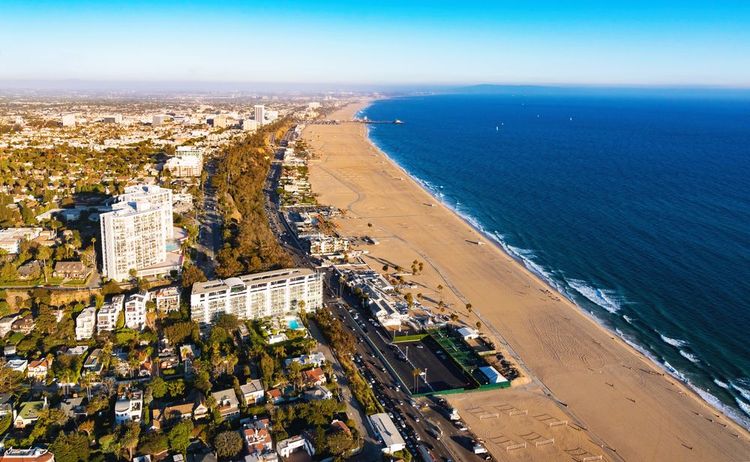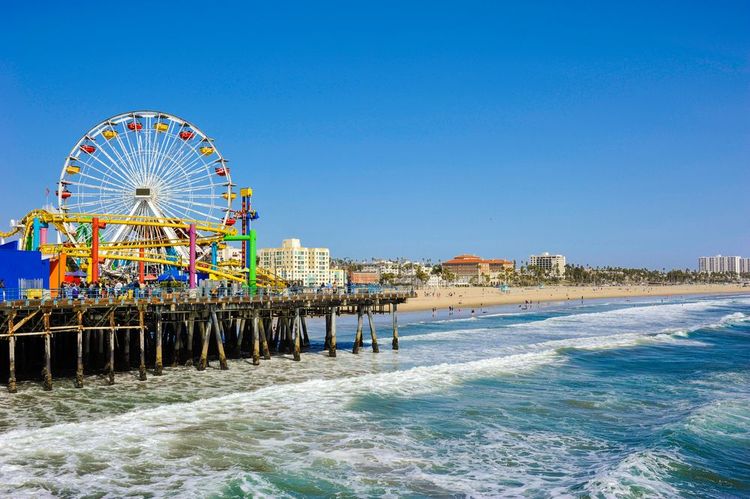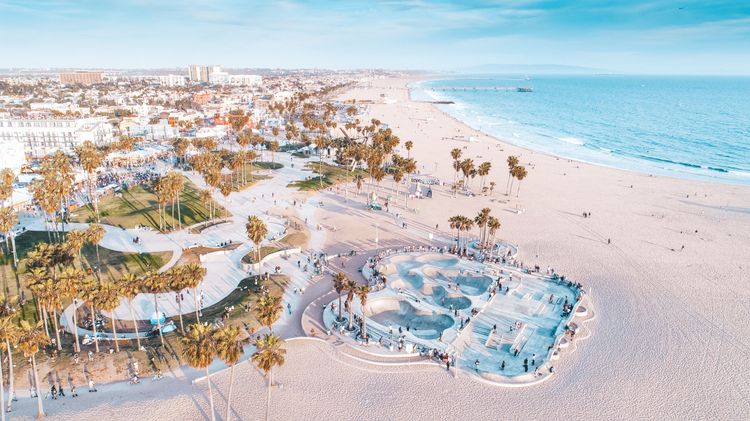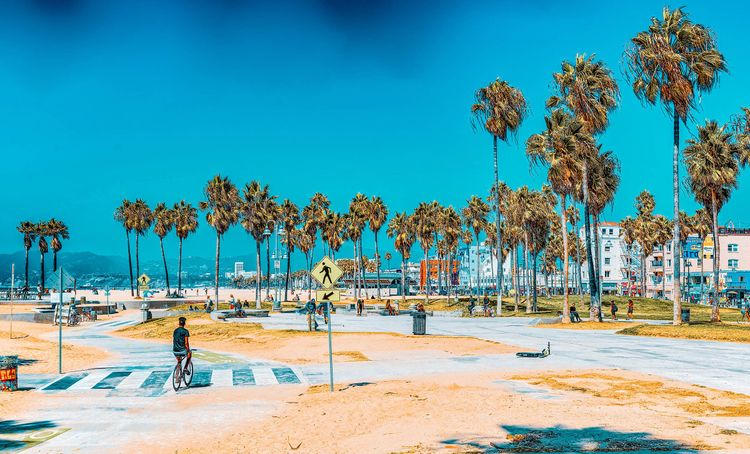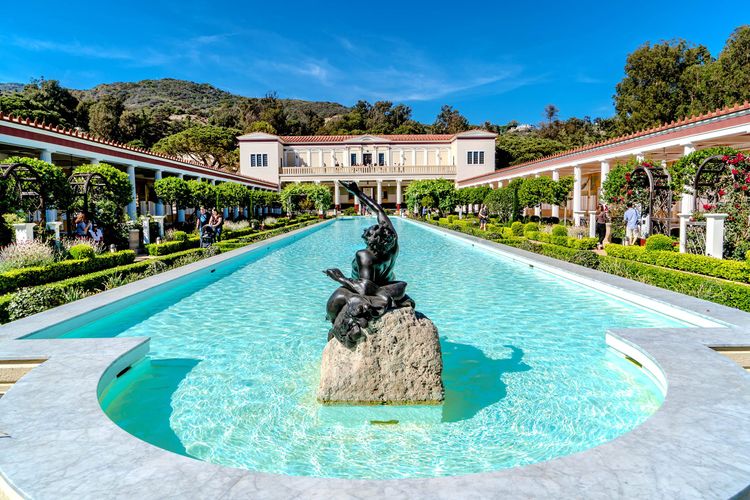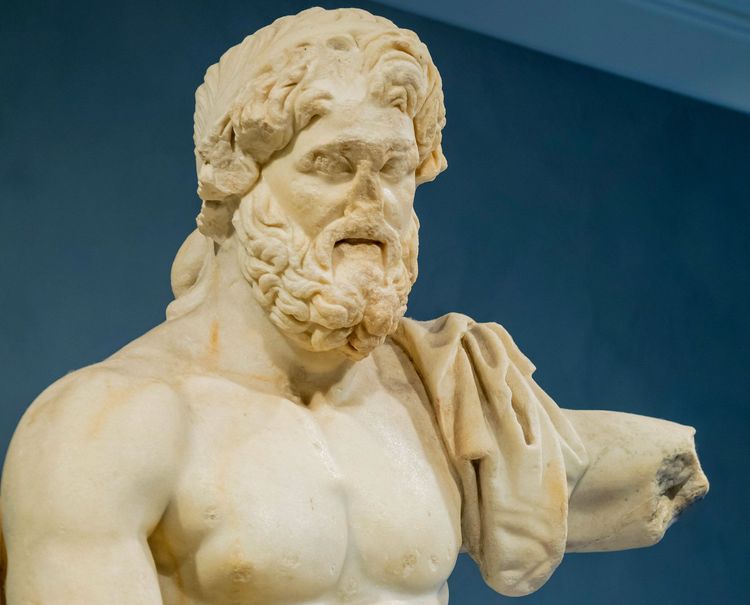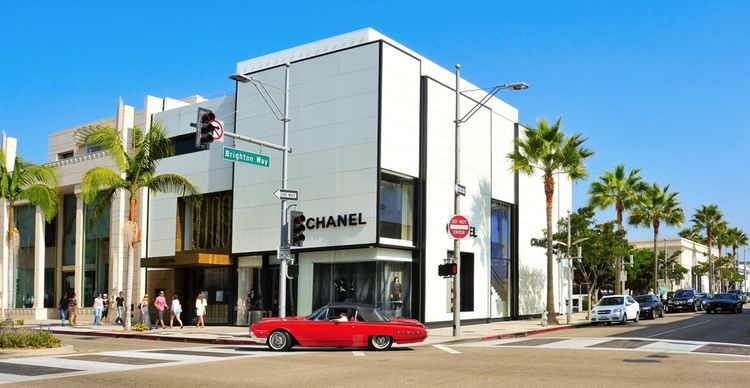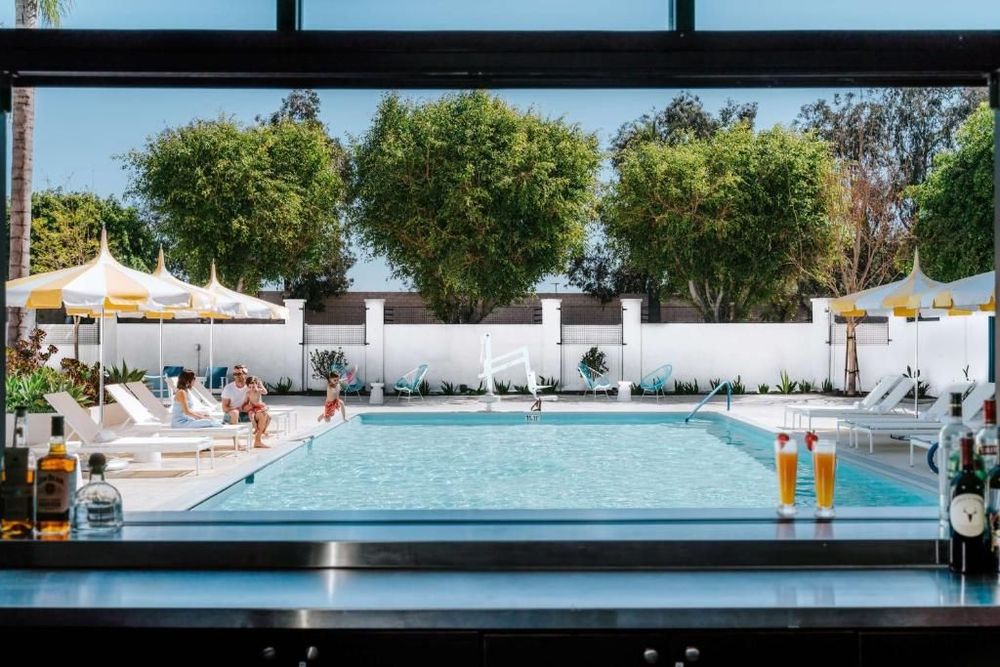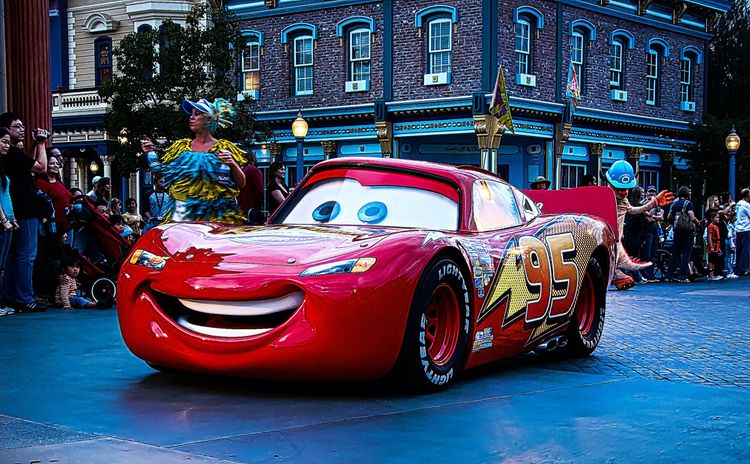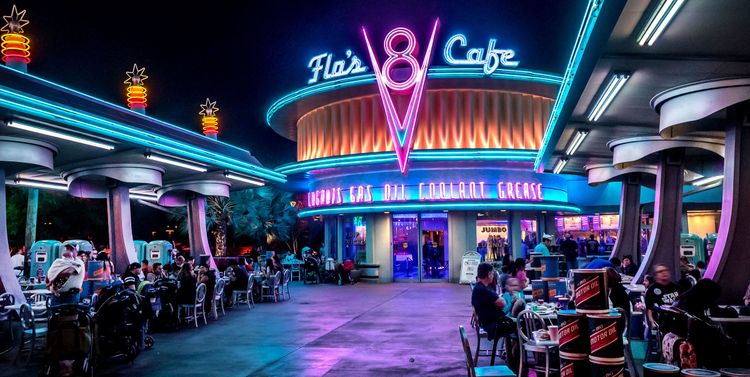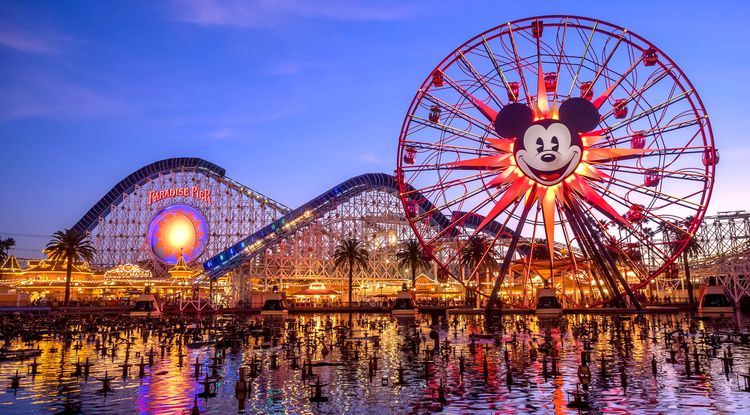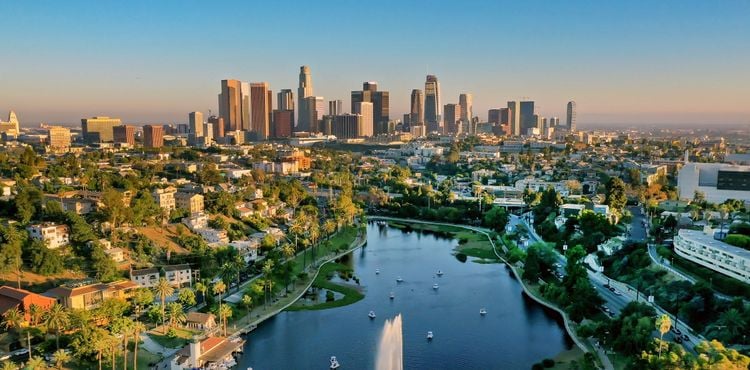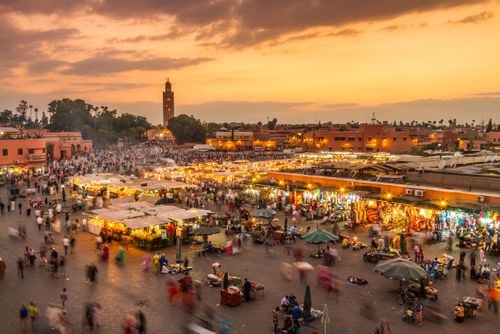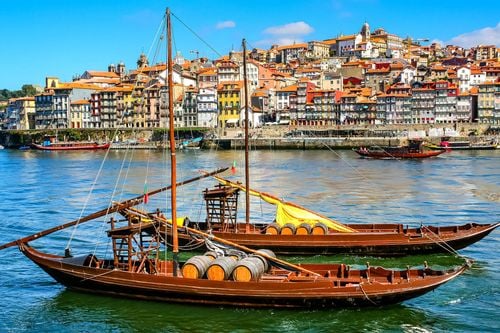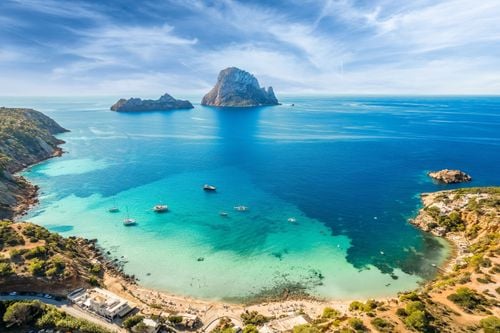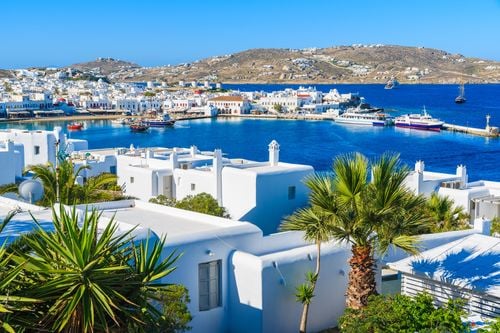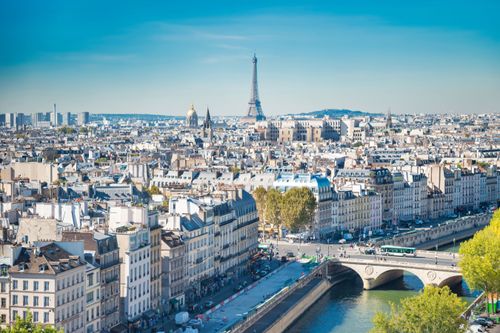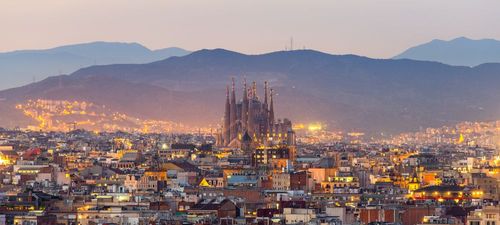Los Angeles is unique. There are so many things to do, so many places to visit, so many shows to see, so many museums to visit, so many landscapes to discover, so many restaurants to enjoy and so many people to meet. A melting pot of cultures, sounds and landscapes. And so many choices to make! Faced with so much, you're always spoilt for choice.
The city of Los Angeles merges with its county. So we'll do the same. For example, Beverly Hills is a city in its own right, but we like to lump it in with L.A.
To get organised, it's best to know the geography of the area. Los Angeles runs along the Pacific Ocean, with the coastline running diagonally south-east/north-west. The whole of the north is covered by a mountainous line running from Pacific Palissades to San Bernardino via Pasadena. The urban area of L.A. is located in the triangle formed by the coast with its mountains to the north and east, a series of hills (Pomona, Chino and Anaheim), mountains (to the south, Silverado) and canyons (Limestone and Trabuco).
While the county's beaches stretch from San Clemente (Orange County) in the south to Malibu in the north (some 150 kilometres of coastline, most of it beach), the city's beaches stretch from Redondo Beach in the south to Topanga Beach in the far north.
To help you find your way around, here are the main routes: to the north are, from east to west, and roughly on the same line: Santa Monica and Venice Beach (on the coast), the Getty Center, UCLA, Beverly Hills, the Los Angeles County Museum of Art, Hollywood (Koreatown, Little Tokyo, Chinatown) with Paramount Studios, then Monterey Park. The whole of L.A. tourism is concentrated on this axis, so there's already plenty to do in terms of sightseeing! But we won't be skipping Disney, whose theme park is located to the south, in Anaheim, i.e. outside the city in the strict sense of the term.
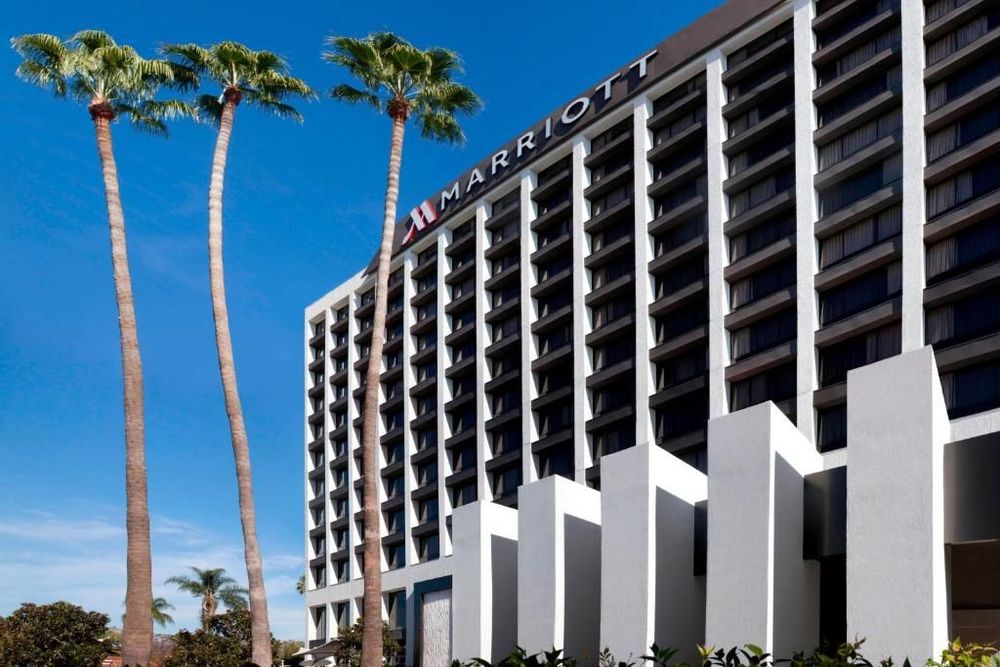 Los Angeles
Los Angeles
